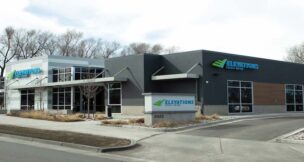How environmentalism and the oil and gas industry can coexist


How environmentalism and the oil and gas industry can coexist
It’s no secret that Colorado has some of the most breathtaking landscapes in the country. It’s also no secret that the people of Colorado are passionate about keeping our lands beautiful for generations to come. Industry and human development might seem like a hindrance to that goal, but there are many ways that industrial progress and environmental protection can coexist and thrive together.
One such solution in the oil and gas industry is land reclamation and restoration. Land reclamation and restoration is the process of reclaiming and restoring the land in and around an oil and gas site, pipeline, or mining location after extraction is complete. This returns the site to its original state and allows it to rejoin the surrounding natural ecosystem.
A Reclamation Plan is being required by more and more state and federal agencies as part of a surface use plan of operation, including in Colorado where reclamation is required by the Colorado Oil & Gas Conservation Commission (COGCC).
Although it may sound simple, the land reclamation and restoration process encompasses quite a few steps to ensure the land is properly restored to the ecosystem.
Let’s take a look at how the reclamation and restoration process works from start to finish.
Pre-Reclamation
Before reclamation can begin, the site needs to be analyzed and prepared for reclamation. The easiest way to ensure proper analysis and execution throughout the reclamation process is to hire an engineering firm with all the necessary services in-house. The engineering firm would facilitate landowner relations and any legal/official documentation required, survey the area to identify existing appurtenances and analyze the site’s surfaces, conduct archaeological and environmental assessments to review the existing site for cultural resources and/or growth status, perform geotechnical testing and reporting, and research any historical imagery in the GIS or historical knowledge found in the archaeological assessment. After all these services have been completed, an Engineer Designed Reclamation Plan would be written to elaborate on any findings from the pre-reclamation work and to map out the site’s reclamation plan.

Reclamation
Once the Engineer Designed Reclamation Plan is developed, work can begin on facilitating the actual reclamation and restoration process. Well sites, roads, and other areas disturbed by oil and gas extraction are restored through earthwork (topsoil and soil amendments, recontouring for erosion control) and revegetation (seeding, weed control, and native species planting). Construction inspection is often a part of the reclamation process to ensure the reclamation plan is being constructed and completed according to its design.
Did you know: Operators on federal lands are required to include a reclamation plan in their surface use plan of operation, which must be approved by the Bureau of Land Management (BLM) or by the U.S. Forest Service (USFS).
Post-Reclamation
Once the site’s reclamation is complete, a post-reclamation site assessment is performed to ensure the surface revegetation plan was followed and the site will be properly reintegrated into the landscape. The post-reclamation site assessment process can sometimes take several years of monitoring and amending before this integration is complete. Once all parties are satisfied with the results, final signoffs and absolution of liability activities take place, ensuring the client (oil and/or gas company) is not held liable for the site going forward.

Preserving Colorado’s diverse and beautiful lands is crucial to the state’s success and sustainability. It’s a goal we share at KLJ because we live and work in communities across Colorado, every day. To learn more about KLJ’s environmental, land reclamation, and oil and gas capabilities, visit www.kljeng.com.
 Dave Pechacek is a civil engineer specializing in design, construction inspection, and land reclamation and restoration of oil and gas sites. As a licensed Professional Engineer, he develops land reclamation and restoration plans for oil well pad sites and oversees post-reclamation monitoring for those sites after the reclamation work has been completed. He has over seven years of experience on projects for counties, municipalities, state, and federal agencies. He is also a certified drone pilot and a leader in KLJ’s continued use of drone technology across the country.
Dave Pechacek is a civil engineer specializing in design, construction inspection, and land reclamation and restoration of oil and gas sites. As a licensed Professional Engineer, he develops land reclamation and restoration plans for oil well pad sites and oversees post-reclamation monitoring for those sites after the reclamation work has been completed. He has over seven years of experience on projects for counties, municipalities, state, and federal agencies. He is also a certified drone pilot and a leader in KLJ’s continued use of drone technology across the country.
(This sponsored content is provided by KLJ)













